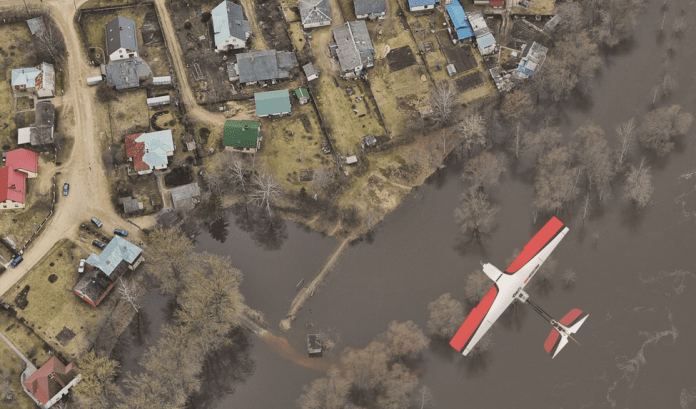Harvey, Irma, Maria. Two terrible earthquakes in Mexico in the span of a couple of weeks. Devastation in Puerto Rico.
To say that humanitarian and relief workers around the Caribbean and the Gulf of Mexico are busy these days would not be the right choice of words, and so many of us are asking what we can do to help.
Thankfully, our first responders and relief workers are getting a lot of help from the technology about which we are all very passionate: unmanned aerial vehicles.
Satellite images have played a vital role in humanitarian and relief efforts for many years. However, satellites are expensive, do not work when it’s cloudy, and it takes quite a while for the imagery to arrive where it´s urgently needed.
And that’s where drones come in.
Meet the humanitarian drones
They can help with many things, especially during and after a natural disaster. Not only can they assess damage, but they are also much faster than ground rescue teams in spotting people in distress. They can even be helpful in micro-transporting things like rescue ropes, lifejackets, or medication to remote or otherwise inaccessible areas.
Eastern Kentucky University lists five ways drones are being used for disaster relief:
- hazardous chemical spills,
- mapping,
- assessing structural damage
- delivering emergency infrastructures and supplies, and even
- extinguishing wildfires.
An important point in all that is that drones can go in when it’s too dangerous for humans to get near a site. Take the Fukushima nuclear power plant disaster as an example.
Coming of Age
In fact, drones and disaster relief-now are considered important enough that even the UN got involved. In 2014, it published an Official UN Policy Brief on Humanitarian UAVs pointing out opportunities as well as challenges like practical and ethical issues.
Other organizations have sprung up like UAVIATORS, “the humanitarian UAV network.” Or a loose affiliation of professionals calling itself Humanitarian Drones, operating under the motto “drones for good, offering help + data from the sky” at humanitariandrones.org.
However, the 2017 hurricane season looks likely to go down in drone history as the year when humanitarian uses of UAVs came of age
FCW.com, the online publication of Federal Computer Week covering “The Business of Federal Technology” reports on the use of drones in the wake of hurricane Harvey.” FCW quotes Federal Aviation Administration (FAA) chief Michael Huerta:
“I don’t think it’s an exaggeration to say that the hurricane response will be looked back upon as a landmark in the evolution of drone usage in this country.”
Following Harvey, the FAA issued more than 70 drone operation authorizations to local, state, and federal agencies as well as cell tower and insurance companies. According to Huerta, using drones made operations safer and more efficient overall compared to operating conventional manned aircraft.
When Irma hit, the same happened albeit on an even larger scale. In the week after “the perfect storm” had subsided, the FAA issued over 132 airspace authorizations.
And while the Daily Beast reported on complaints from rescue officials that private drones over Houston endangered rescue choppers, the consensus now seems to be that more good than bad comes from utilizing UAVs in rescue and relief efforts. However, the complaints cited in the report are real and there are some critical lessons to be learned about how to effectively coordinate and communicate drone activities with the experts charged with running emergency and disaster relief efforts.
Drones are a perfect tool for this mission, and providing UAV support to disaster relief has quickly become a new field of occupation for those with the right skills and knowledge. Although, of course, it is a bit like working for the fire department. You actually hope that you spend most of your time polishing the shiny bell on the truck instead of having to assess terrible damage after a natural disaster.
Are We Connected?






